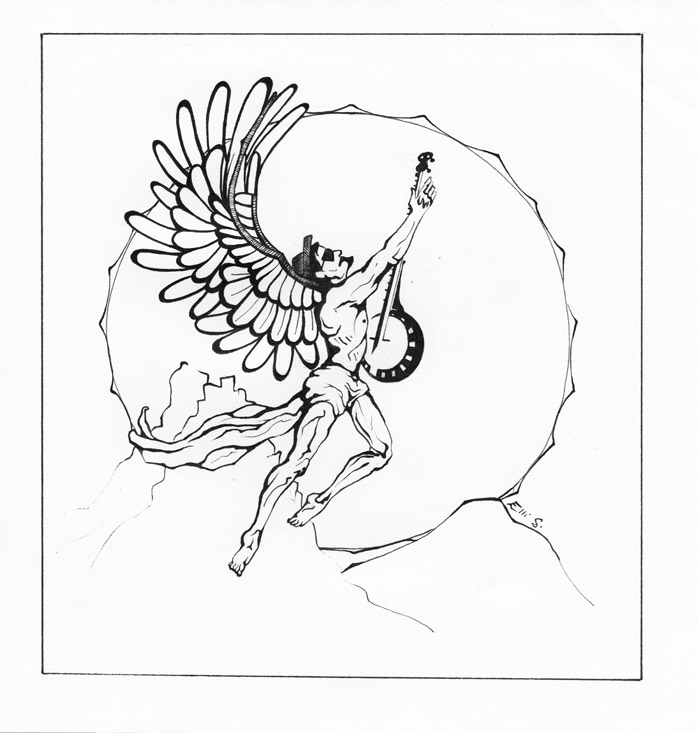Remember when a band consisted only of guitar, bass, drums, and vocals? Over the past few years, a cursory listen to rock radio has featured the swelling of string lines, the jangle of banjos, and the searing leads of brass sections. As listeners, we are confronted with an array of genres that can’t be explained without a dash: Indie-folk, baroque pop-rock, and orchestral-rock are all key parts of what is considered ‘rock music’ these days. How did we get here, to a point where a band’s roster takes up half the page? How did banjos come to stand alongside guitars as the instrument “du jour?” More importantly, will it all last? The reality of the situation is: Probably not.
To arrive at that conclusion, it’s best to start at the beginning. The growth of this trend largely begins with the release of great baroque-rock albums such as Arcade Fire’s Funeral and Sufjan Stevens’ Illinois in the mid 2000s. Though they received massive critical acclaim, their mainstream appeal was limited at best. Funeral, now a modern-day classic, wasn’t certified gold in the United States until 2011. Banjos, horns, and strings were beginning to impact the shape of alternative music, but had yet to make a dent in mainstream musical circles.
This fundamentally changed around the turn of the last decade when, all of a sudden, these types of artists exploded into the mainstream consciousness. Perhaps the ultimate marker of their sudden industry acceptance occurred at the 2011 Grammy Awards. I’ll never forget Barbara Streisand’s incredulous face as she awarded album-of-the-year to Arcade Fire for The Suburbs, catapulting them into international stardom.
However, Arcade Fire’s Grammy win wasn’t even the most pivotal moment of that year’s awards ceremony. The 2011 Grammys also marked the coming-out party for the English band Mumford and Sons. Though it didn’t win any awards, its performance introduced a spin on the folk-rock narrative. Its sound was commercial and straightforward, but still featured the esoteric timbres of its contemporaries. This proved to be the final piece of the puzzle to push the overlooked banjo into the limelight. Produced by Markus Dravs, who also produced The Suburbs, Mumford and Sons’ Sigh No More sold over a million copies in 2011. The album went on to go double platinum in Canada, triple platinum in the United States, and a whopping quintuple platinum in the United Kingdom.
In the wake of Mumford and Sons’ explosion, many bands found success in imitating its trademark sound. The Lumineers’ “Ho Hey” and Of Monsters and Men’s “Little Talks” are two of the most obvious singles that echo the Mumford formula: Catchy, innocuous songs that feature unconventional instruments.
Unfortunately, every success comes with a price. The same formula that brought folk-rock and its associated genres to centre stage will result in its demise. In fact, it can be argued that this style peaked in popularity from 2011 to 2012 and has been in decline ever since. The main problem with having an easily imitable sound is that it will be imitated. Naturally, this leads to over-saturation of the style. Neither The Lumineers nor Of Monsters and Men have been able to follow their hit singles with enduring success or popularity. Sensing staleness, the artists who brought strings, banjos, and horns to the mainstream are beginning to drastically change their sound. For example, both Arcade Fire and Sufjan Stevens prominently featured electronic instruments on their most recent albums, perhaps in an attempt to distance themselves from the ‘Mumford-core’ trend that has permeated the airwaves in recent years. As of September 2013, Mumford and Sons has been on hiatus and is losing momentum daily. Put it all together and you get an inevitable and steady decline.
So what is to become of indie-folk, folk-rock, baroque-rock, or orchestral-rock? Is it doomed to die, to disappear completely for the public consciousness? Of course not—there will always be someone who hears Funeral, Illinois, or Sigh No More for the first time and starts a band with seven of their friends. The banjos, strings, and horns will likely just go back where they started—the land of the critically-acclaimed and criminally-underrated. Maybe that has been their natural home all along.







